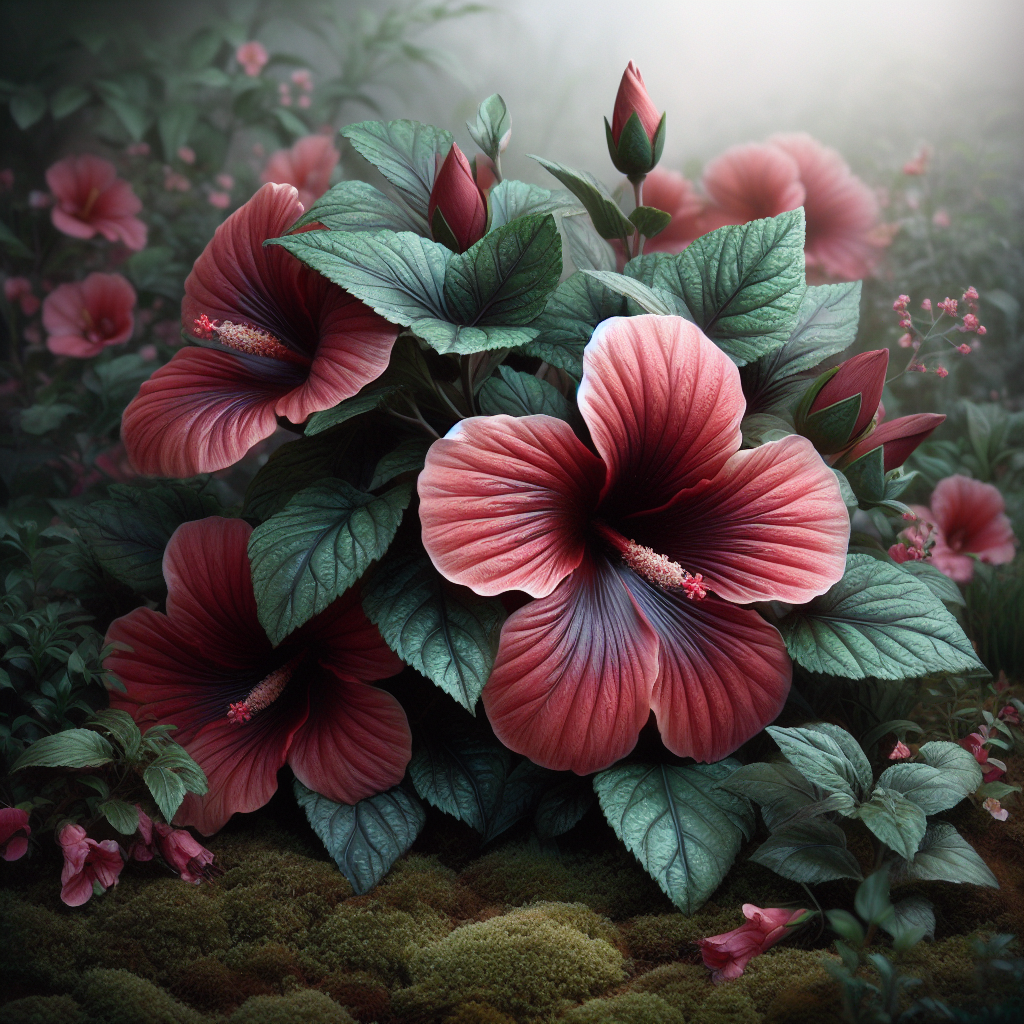Cranberry Hibiscus (Hibiscus acetosella), known by various names such as African rosemallow and false roselle, is a captivating plant that adds both visual appeal and nutritional value to your garden. In this comprehensive guide tailored for hobbyist gardeners, we’ll explore the diverse uses of Cranberry Hibiscus, its planting specifics, and offer tips for optimal cultivation.
Botanical Overview
- Botanical Name: Hibiscus acetosella
- Common Names: African rosemallow, false roselle, maroon mallow, Florida cranberry
- Family: Malvaceae
- Origin: Native (most likely) to tropical Africa
Plant Description
Cranberry Hibiscus, a short-lived perennial shrub in subtropical and tropical regions, can be grown as an annual in cooler climates. With a rapid growth rate, it reaches up to 1.7 m in height, featuring deeply cut leaves reminiscent of Japanese maple. The striking deep cranberry red color of the leaves adds ornamental value, complemented by small, rose-pink hibiscus-type flowers. Thriving in warm and wet conditions, this hardy plant prefers full sun, though it can tolerate partial shade. It requires ample water, rich, fertile, well-drained soil kept mulched, and a pH between 6.1 and 6.5.
Uses
- Nutrient-Rich Vegetable: Cranberry Hibiscus leaves are a powerhouse of nutrition, high in vitamins B3 (niacin), B2, A, and C. Rich in protein, antioxidants, and anthocyanins, the young leaves boast a pleasantly tart flavor, suitable for raw or cooked consumption. Due to oxalic acid content, moderation in consumption is advised.
- Floral Infusions: The flowers are utilized in teas and drinks, contributing color rather than taste. In Central America, they are combined with ice, sugar, lemon, or lime juice and water to create a visually stunning purple lemonade.
- Edible Landscaping: With its vivid leaf color, Cranberry Hibiscus serves as an excellent choice for background planting in ornamental beds, merging aesthetics with functionality.
Planting Details
- Recommended Planting Time: Cuttings are best taken when the soil temperature reaches at least 25°C.
- Propagation: Easily propagated from cuttings (10 – 20 cm long), half buried in potting mix, and kept consistently moist.
- Spacing: Optimal spacing is at 60 cm apart, and the plant responds well to pruning, promoting bushy growth and extending its lifespan.
Tips for Hobbyist Gardeners
- Harvesting: Harvest young leaves regularly, promoting continual growth and ensuring optimal tenderness and flavor.
- Pruning: Regular pruning not only maintains a bushy appearance but also prolongs the plant’s life.
- Oxalic Acid Awareness: Due to oxalic acid content, consume Cranberry Hibiscus leaves in moderation to avoid overconsumption of this compound.
- Companion Planting: Consider planting Cranberry Hibiscus alongside other ornamental and edible plants to create visually appealing and functional garden spaces.
Dual-purpose gem in the gardening world
Cranberry Hibiscus stands as a dual-purpose gem in the gardening world, offering both aesthetic allure and nutritional bounty. By understanding its uses, planting details, and implementing essential tips, hobbyist gardeners can cultivate a thriving Cranberry Hibiscus that not only enhances the visual appeal of their garden but also contributes to a diverse and nutrient-rich harvest.
